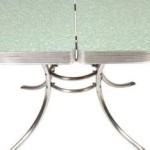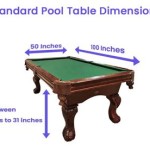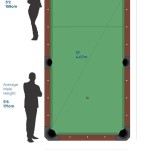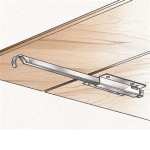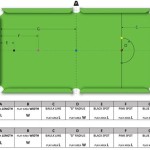What Vegetables Can You Grow In A Pot?
Growing vegetables in pots, also known as container gardening, offers a practical solution for individuals with limited space, such as apartment dwellers or those with small yards. It allows for a controlled environment, enabling the cultivation of fresh produce even in areas with poor soil quality. The success of container gardening depends on several factors, including the selection of appropriate vegetables, proper pot size, suitable soil, and consistent watering and fertilization.
The selection of vegetables that thrive in pots is crucial for a successful container garden. Certain vegetable varieties are naturally better suited to the confined spaces of containers than others. Considerations include the plant's size at maturity, its root system, and its sunlight requirements. Choosing the right vegetables will maximize yield and minimize potential problems associated with overcrowding or insufficient resources.
Leafy Greens: A Potting Staple
Leafy greens are generally well-suited for container gardening due to their relatively shallow root systems and compact growth habits. Lettuce, spinach, kale, and arugula are excellent choices that can be harvested continuously as needed. These vegetables prefer cooler temperatures and can be grown in partial shade, making them ideal for balconies or patios that don't receive full sun all day.
To cultivate leafy greens in pots effectively, select a container that is at least 6 inches deep. Use a well-draining potting mix, and water regularly, keeping the soil consistently moist but not waterlogged. Fertilize every two to three weeks with a balanced liquid fertilizer to promote healthy growth. Succession planting – sowing new seeds every few weeks – will ensure a continuous harvest throughout the growing season.
Different varieties of lettuce, such as romaine, butterhead, and loose-leaf, offer diverse textures and flavors. Spinach is a nutrient-rich green that is best grown in cooler weather to prevent bolting (premature flowering). Kale is a hardy green that can tolerate frost and can be harvested throughout the fall and winter in many regions. Arugula adds a peppery flavor to salads and grows quickly in containers.
Root Vegetables: Compact and Contained
While some root vegetables require more space than leafy greens, certain varieties can be successfully grown in pots. Carrots, radishes, and beets are good options, provided the container is deep enough to accommodate their root growth. Shorter, rounder varieties are generally more suitable for container gardening than long, slender varieties.
For carrots, choose a pot that is at least 8 to 10 inches deep. Radishes, being the quickest to mature, can be grown in shallower containers, around 6 inches deep. Beets need a container that is at least 8 inches deep. It is important to use a loose, well-draining potting mix to avoid root deformation. Avoid using garden soil directly, as it can compact in containers, hindering root growth.
Thinning seedlings is crucial for root vegetables grown in pots. Overcrowding can result in stunted growth and small, misshapen roots. Water regularly, especially during dry periods, and fertilize with a fertilizer that is higher in phosphorus and potassium to encourage root development. Harvest root vegetables when they reach the desired size, as leaving them in the pot for too long can cause them to become woody or bitter.
Fruiting Vegetables: Tomatoes, Peppers, and Eggplants
Fruiting vegetables, such as tomatoes, peppers, and eggplants, can be successfully grown in containers, but they require larger pots and more attention than leafy greens or root vegetables. These vegetables need plenty of sunlight, typically at least 6 to 8 hours per day, and regular watering and fertilization to produce a good yield.
Tomatoes are a popular choice for container gardening. Determinate, or bush, varieties are better suited for pots than indeterminate, or vining, varieties, as they have a more compact growth habit. Select a pot that is at least 12 inches in diameter and 12 inches deep for determinate tomatoes. Indeterminate tomatoes require even larger pots, at least 18 inches in diameter and 18 inches deep, and will need staking or caging to support their growth.
Peppers also thrive in containers, and both bell peppers and chili peppers can be grown successfully. Choose a pot that is at least 10 to 12 inches in diameter for peppers. Eggplants require similar conditions to tomatoes and peppers and should be grown in pots that are at least 12 inches in diameter. All three fruiting vegetables benefit from regular fertilization with a balanced fertilizer, especially during flowering and fruit development.
Watering is critical for fruiting vegetables grown in pots. The soil should be kept consistently moist but not waterlogged. Check the soil moisture regularly, especially during hot weather, and water when the top inch of soil feels dry. Mulching the soil surface can help to retain moisture and suppress weeds. Providing support for the plants, such as stakes or cages, is essential to prevent the stems from breaking under the weight of the fruit.
Choosing the right tomato variety is important for success. Determinate varieties like 'Roma' and 'Celebrity' are compact and well-suited for containers. Indeterminate varieties, like 'Better Boy' and 'Brandywine', will need larger pots and more support. For peppers, varieties like 'Bell Boy' and 'Jalapeno' are popular choices for container gardening. Eggplant varieties like 'Black Beauty' and 'Ichiban' also do well in pots.
Herbs: Flavorful Additions to Your Container Garden
Many herbs thrive in containers, making them an excellent addition to a vegetable garden. Herbs like basil, parsley, mint, chives, and thyme are easy to grow and can be harvested frequently. They add flavor to meals and also attract beneficial insects to the garden.
Herbs generally require well-draining soil and plenty of sunlight, although some, like mint, can tolerate partial shade. Choose pots that are at least 6 inches deep for most herbs, and water regularly, allowing the soil to dry out slightly between waterings. Avoid overwatering, as this can lead to root rot.
Basil is a popular herb for container gardening and comes in many varieties, including sweet basil, Genovese basil, and Thai basil. Parsley is another versatile herb that can be grown in pots and used fresh or dried. Mint is a vigorous grower and should be planted in its own pot to prevent it from spreading and taking over other plants. Chives are easy to grow and add a mild onion flavor to dishes. Thyme is a drought-tolerant herb that thrives in well-draining soil and full sun.
When planting herbs in pots, consider their growth habits and sunlight requirements. Some herbs, like rosemary and lavender, require full sun and well-draining soil, while others, like mint and parsley, can tolerate partial shade. Combine herbs in the same pot that have similar needs, and avoid overcrowding them. Regular harvesting will encourage bushier growth and prevent the herbs from becoming leggy.
Other Considerations for Container Gardening
Soil selection is a crucial factor in container gardening. Avoid using garden soil directly in pots, as it can compact over time and hinder drainage. Instead, use a high-quality potting mix that is specifically formulated for container gardening. These mixes typically contain a blend of peat moss, perlite, and vermiculite, which provide good drainage and aeration.
Watering is another important aspect of container gardening. Pots tend to dry out more quickly than garden beds, so it is essential to monitor the soil moisture regularly and water when the top inch of soil feels dry. Water deeply, ensuring that the entire root ball is moistened. Avoid overwatering, as this can lead to root rot. Consider using a self-watering container or adding water-retaining polymers to the potting mix to help retain moisture.
Fertilization is necessary to provide the plants with the nutrients they need to grow and produce a good yield. Use a balanced fertilizer that contains nitrogen, phosphorus, and potassium, as well as micronutrients. Fertilize regularly, following the instructions on the fertilizer label. Organic fertilizers, such as compost tea or fish emulsion, can also be used to provide nutrients to the plants.
Pest and disease control is an important aspect of container gardening. Monitor the plants regularly for signs of pests or diseases. Common pests that affect vegetable plants include aphids, spider mites, and whiteflies. Diseases that can affect vegetable plants include powdery mildew and blight. Treat pests and diseases promptly using appropriate methods, such as insecticidal soap, horticultural oil, or fungicides.
Sunlight is crucial for the growth of vegetable plants. Most vegetables require at least 6 to 8 hours of sunlight per day. Choose a location for your container garden that receives plenty of sunlight. If you do not have a sunny location, consider using grow lights to supplement the natural sunlight.
The placement of containers can also impact plant health. Positioning pots to maximize sunlight exposure while also considering wind protection is important. Tall plants may need staking to prevent them from being blown over in windy conditions.

Vegetables You Can Grow In Small Pots Space Gardening

20 Best Vegetables For Container Gardening Growing In The Garden

17 Vegetables That You Can Grow In Pots And Containers Growing Container Gardening

How To Grow Organic Vegetables In Pots About The Garden

The Best 11 Vegetables To Grow In Pots And Containers Gardener S Path

20 Best Vegetables For Container Gardening A Piece Of Rainbow
Vegetables In Containers Rhs Gardening

Easiest Vegetables To Grow In Flower Pots

How To Grow Patio Fruit And Vegetables Suttons Gardening

25 Most Ive Vegetables For Containers Best Pots


